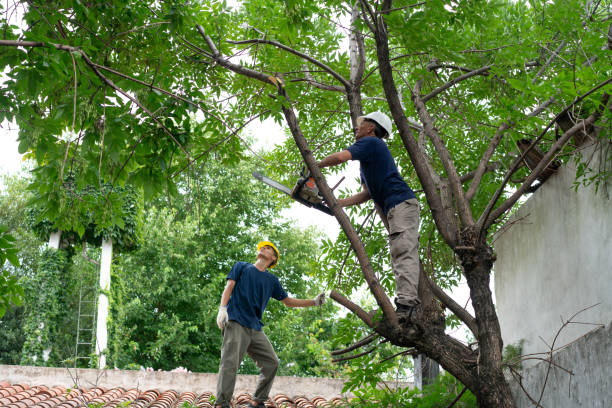Caring for trees is essential to ensure their longevity and beauty while enhancing the environment around your property. Tree maintenance involves regular inspection, pruning, fertilization, and other care practices to keep trees thriving. This guide will walk you through effective tree maintenance in High Point NC strategies and answer common questions about keeping your trees in excellent condition.
Importance of Tree Maintenance
Trees offer numerous benefits, from providing shade and improving air quality to enhancing property aesthetics. However, without proper care, they may become vulnerable to pests, diseases, and structural issues. Regular maintenance ensures:
- Improved tree health.
- Prevention of hazardous conditions.
- Enhanced property value.
Common Tree Maintenance Practices
Tree maintenance includes several tasks tailored to the tree species, its age, and environmental conditions. Essential practices include:
- Pruning: Removing dead or diseased branches to stimulate growth.
- Mulching: Retaining moisture and regulating soil temperature.
- Fertilization: Ensuring the tree receives adequate nutrients.
Seasonal Tree Maintenance Tips
Tree care requirements change with the seasons:
Spring:
- Inspect for new growth and potential pest infestations.
- Apply mulch to prepare for warmer months.
Summer:
- Prune weak or dead branches.
- Ensure proper watering during dry spells.
Fall:
- Rake fallen leaves and check for signs of disease.
- Fertilize to prepare for winter dormancy.
Winter:
- Protect young trees from frost damage.
- Avoid pruning unless necessary to remove hazardous branches.
Recognizing Tree Health Issues
Early detection of tree health issues is crucial. Look for:
- Discolored or wilting leaves.
- Cracks or splits in the bark.
- Unusual growths, like fungi or pests.
- Dead or brittle branches.
Proper Pruning Techniques
Pruning improves tree structure and prevents accidents. Follow these tips:
- Use sharp, sterilized tools to avoid spreading diseases.
- Trim during dormant seasons for minimal stress.
- Avoid over-pruning as it may weaken the tree.
The Role of Soil and Fertilization
Healthy soil is vital for tree growth. Test soil to determine nutrient deficiencies and add appropriate fertilizers. Organic fertilizers are preferred for sustainable tree care.
Importance of Professional Tree Maintenance Services
While some tasks can be DIY, others require the expertise of certified arborists, such as:
- Diagnosing complex tree diseases.
- Safe removal of hazardous trees.
- Advanced pruning and cabling techniques.
Benefits of Mulching and Irrigation
- Mulching: Prevents soil erosion, retains moisture, and controls weeds. Spread mulch evenly, keeping it away from the tree trunk.
- Irrigation: Overwatering can be as harmful as underwatering. Use deep watering techniques to encourage root growth.
Promoting Tree Longevity Through Preventive Care
Preventive care, including routine inspections and timely interventions, ensures the long-term health of your trees. Regularly monitor for changes in tree health and consult professionals when necessary.
FAQs
Q1: How often should I prune my trees?
Most trees benefit from pruning once a year, ideally during their dormant season. Some flowering trees may require different schedules.
Q2: Can I use any type of mulch around my trees?
Organic mulch, such as wood chips or bark, is best. Avoid using mulch that retains too much water near the tree trunk.
Q3: What should I do if I suspect a tree is diseased?
Consult a certified arborist for diagnosis and treatment. Early intervention can save the tree and prevent the disease from spreading.
Q4: Are there signs that indicate a tree needs fertilization?
Yellowing leaves, stunted growth, and sparse foliage may indicate nutrient deficiencies. A soil test can confirm the need for fertilization.
Q5: How can I protect my trees during construction projects?
Install protective barriers around tree roots, avoid piling soil near the base, and consult a professional to mitigate potential damage.
Conclusion
Tree maintenance is not just about enhancing aesthetics; it’s a vital practice to ensure safety, health, and environmental balance. By following these tips and seeking professional assistance when necessary, you can nurture thriving trees that stand tall for generations.









